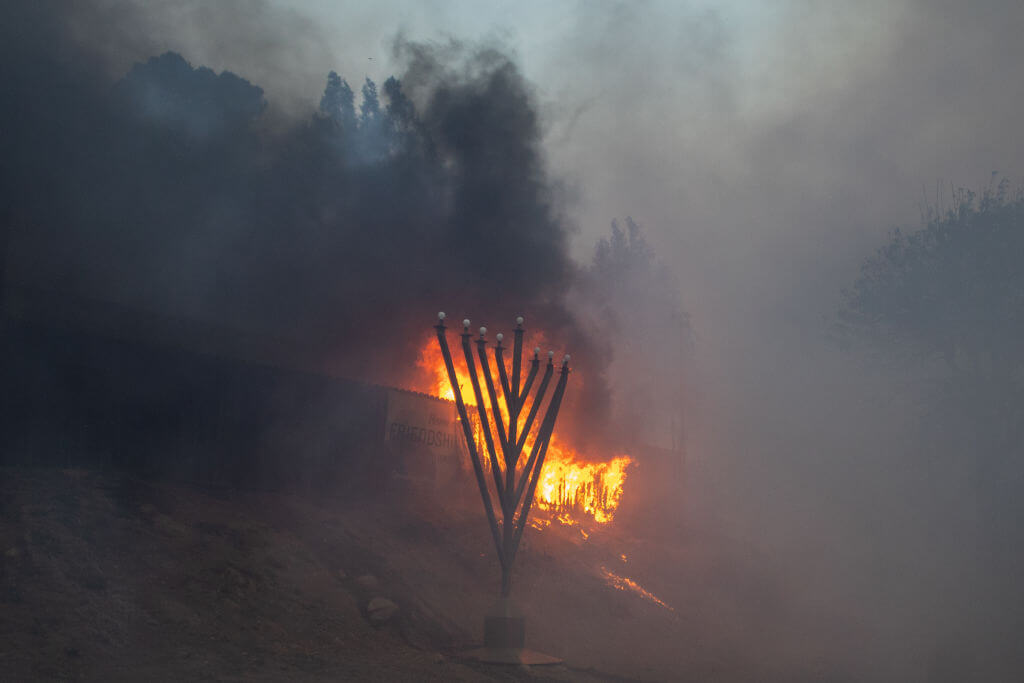Eilat, Tourist Paradise on Red Sea, in Crosshairs as Israel Ponders Terror Threat

Paradise in Crosshairs: Eilat is Israel?s laid-back window on the Red Sea. Security experts fret that it is way too close to jihadi safe havens in Saudi Arabia for comfort. Image by getty images
An airliner full of carefree vacationers dips out of a cloudless sky on a final descent to Eilat and the desert around Israel’s toehold on the Red Sea sizzles with unseen military activity.
The scene repeats every half hour or so, servicing the busy Israeli hotels squeezed into the 11-km (7-mile) sliver of coast between Jordan and Egypt. But with the threat of anti-aircraft missile attacks from Egypt-based militants increasing, security precautions are being stepped up to unprecedented levels.
High-tech electronics, hundreds of human eyes on the ground, defensive weaponry and tighter coordination with Egyptian forces in the Sinai peninsula are all part of “Operation Hourglass” – the Israeli response to an influx of weaponry and Islamist guerrillas into the sandy tracts across the border.
As well as providing Israel with a strategic Asian cargo port and naval base, Eilat’s year-round sun and coral-rich blue water generate a quarter of the tourism revenue that the country counts among its prime sources of foreign currency income.
Israel has invested heavily in security around Eilat since the fall of U.S.-backed Egyptian strongman Hosni Mubarak in 2011. Earlier this year it completed a 250-km (160-mile) barrier with Egypt, stretching from Eilat’s outskirts to the Palestinian Gaza Strip on the Mediterranean.
Officials have also shown Reuters a range of other measures being taken to defend against jihadists in Sinai – including an innovative, Israeli-designed missile deflector aboard planes.
This month’s military overthrow of Egypt’s elected Islamist president has raised expectations in Israel that Cairo will crack down harder in the lawless and craggy peninsula and Israeli commanders say it responds quickly to reported threats.
But Egyptian forces are stretched: since the July 3 takeover, militants have attacked their security checkpoints in Sinai almost daily, killing at least 20 people, and staged assaults on a gas pipeline to Jordan, a Christian priest, and on Eilat, where remains of a rocket were found in a desert area.
It was the latest in dozen cross-border attacks since the Arab Spring. Most were harmless but they included a bloody assault in August 2012 in which 16 Egyptian soldiers were killed in an attack Egypt blamed on militants.
Israel believes disorder in protest-riven Egypt, coupled with arms smuggled in from Libya, has increased the threat to Eilat. Security action, however, is being kept discreet to avoid scaring off the very visitors it aims to keep.
QUIET PREPARATIONS
A limited-circulation official Eilat security estimate seen by Reuters ranked an attack on an Israeli aircraft as less likely than cross-border shelling – incidents that have happened sporadically, with jihadis, apparently in a rush to flee, inaccurately firing short-range rockets that caused no damage.
Lior Ben-Simon, Eilat police spokesman, declined to discuss threat scenarios other than to say that an aviation disaster “is something we and all other relevant agencies have prepared for”.
The Israelis do not want to embarrass Egypt by publicly demanding tougher safeguards in Taba, the Sinai town closest to Eilat and which would be the likely launching ground for the shoulder-fired missiles, also known as man-portable air-defence systems or MANPADs. Their ranges rarely exceed 5 km (2.5 miles).
“The risk to our planes is being taken into account but with much necessary discretion, given the importance of preserving our peace with Egypt,” said Asaf Agmon, a retired Israeli air force brigadier-general who runs the Fisher Brothers Institute for Air and Space Strategic Studies, a think-tank near Tel Aviv.
Since 2011, Agmon said, Israel has frequently rerouted planes so that they land in Eilat from the north, rather than the standard southern approach skirting the Egyptian frontier.
When the latter path is taken, planes bank sooner and more steeply over the Red Sea gulf to reduce their exposure to Taba.
In emergencies or rare low-visibility weather, Israel can redirect Eilat-bound aviation to Ovda, a semi-military airport 60 km (38 miles) inland. It also plans to open a new and bigger airport in Timna, 19 km (11 miles) to the north, by 2017. That would allow for the closure of Eilat’s cramped airport, whose sole runway hugs a tight strip of luxury beachfront resorts.
NO BLIND LUCK
Israel had a galvanising brush with MANPADs when al Qaeda tried to shoot down a planeload of its tourists over Kenya in 2002. Those two missiles happened to miss, but the Israelis scrambled to find a technological alternative to luck.
The result was C-Music, a bathtub-sized undercarriage pod designed by Elbit Systems Ltd.(ESLT.TA) which “blinds” incoming missiles’ heat-seeking warheads with a laser. As of last month, C-Music was being fitted on select jets from national carriers El Al, Arkia and Israir, with the Israeli government footing the $1.5 million unit cost, a security official said.
C-Music can be rotated among aircraft “in less than an hour, with the turn of a few screws”, the official said. That would allow Israel to decide at short notice whether to protect Eilat-bound flights, depending on the level of danger seen from Sinai.
“Yes, Eilat is a high priority, but there are other high-priority destinations,” the official said. “Much of the preventive work is being done by the forces on the ground.”
That referred to the hundreds of Israeli army lookouts, some in camouflaged ambush positions and others perched before surveillance screens in hi-tech bunkers, who strain to spot any unusual presence just over the border in Egypt whenever aircraft approach Eilat. Liaison officers free up telephone hotlines that might be needed for urgent calls to their Egyptian counterparts.
The Israelis assume MANPADs would be fired by two- or three-man crews, a presence hard to hide, though the towering and deeply fissured red buttes around Taba might provide some cover.
To overcome that, troops closely patrol the 5-metre (yard) high razor-wire border fence, guided by cameras that peer far into Egyptian territory with thermal imaging to spot body heat at night. Eilat is rowelled with 70 metre (210 foot) hilltop radar masts that help map out the frontier and movements there.
Israel has also occasionally deploying its Iron Dome aerial defence system in Eilat over the past few months.
The Sinai is largely demilitarised under the 1979 accord but Egypt, in coordination with Israel, has been increasing the troop presence there to tackle jihadis and arms traffic to Palestinians in the neighbouring Gaza Strip.
Top Egyptian army officers say they are liaising with Israel on Sinai. One senior army officer said: “the Egyptian army is prepared to handle a (major) operation against militants there but is delaying it until the internal situation calms on fears that such a move could trigger militant attacks in Cairo and other cities witnessing unrest”.
The Taba area’s sparsely distributed watchtowers and largely empty roads facing Israel suggest it has not received many reinforcements from Cairo. But Israeli commanders voice satisfaction with the responsiveness of Egyptian counterparts who, they say, quickly deploy to intercept anyone suspicious.
“Usually it takes no more than three phone calls (between the sides) and the problem is dealt with,” said one colonel.
An Israeli general, who like other army officers would not be named due to the sensitivity of the issue, told Reuters that Egyptian authorities were taking preventive action because they “understand that any fire on Eilat would do it terrible damage”.
A message from our Publisher & CEO Rachel Fishman Feddersen

I hope you appreciated this article. Before you go, I’d like to ask you to please support the Forward’s award-winning, nonprofit journalism so that we can be prepared for whatever news 2025 brings.
At a time when other newsrooms are closing or cutting back, the Forward has removed its paywall and invested additional resources to report on the ground from Israel and around the U.S. on the impact of the war, rising antisemitism and polarized discourse.
Readers like you make it all possible. Support our work by becoming a Forward Member and connect with our journalism and your community.
— Rachel Fishman Feddersen, Publisher and CEO























